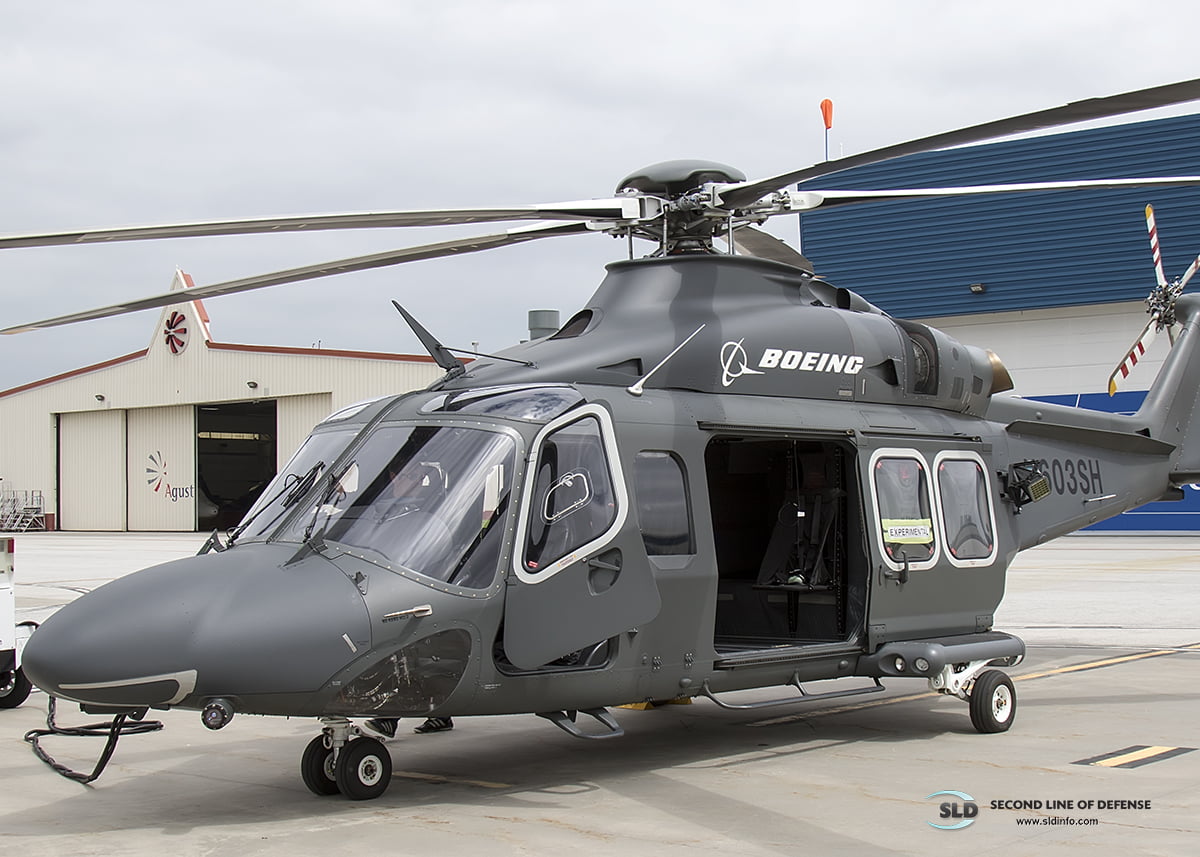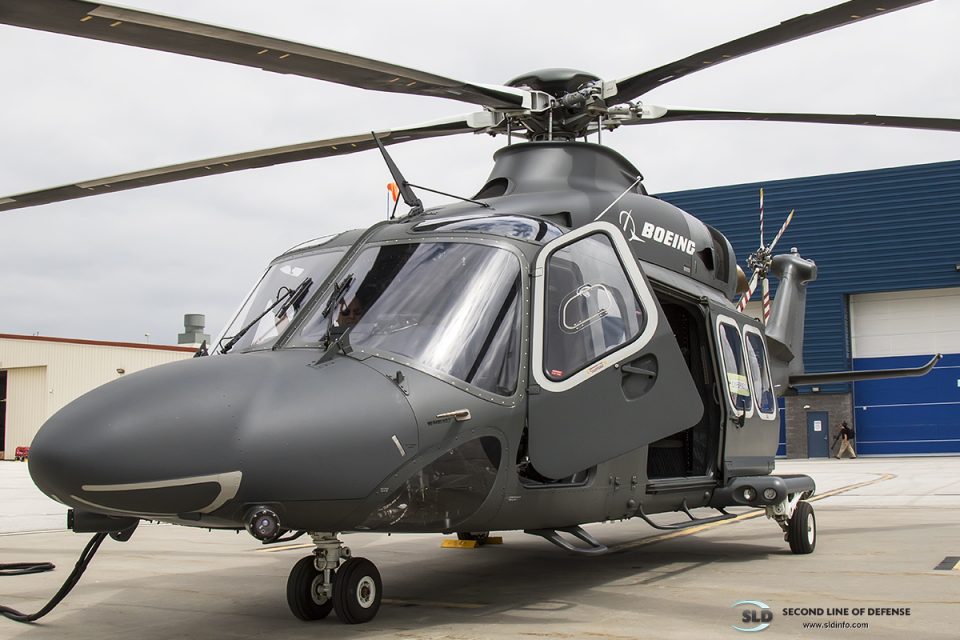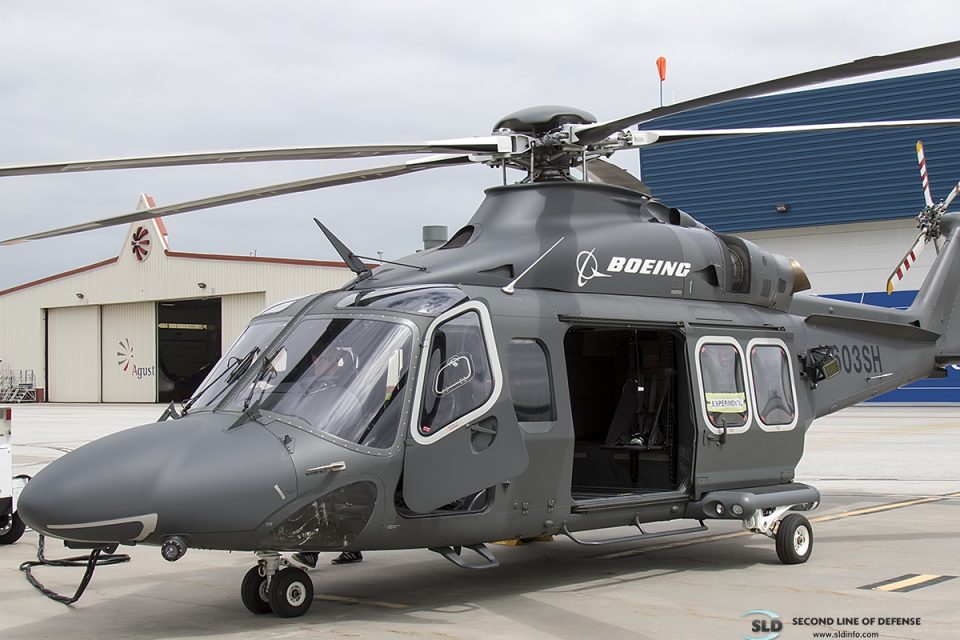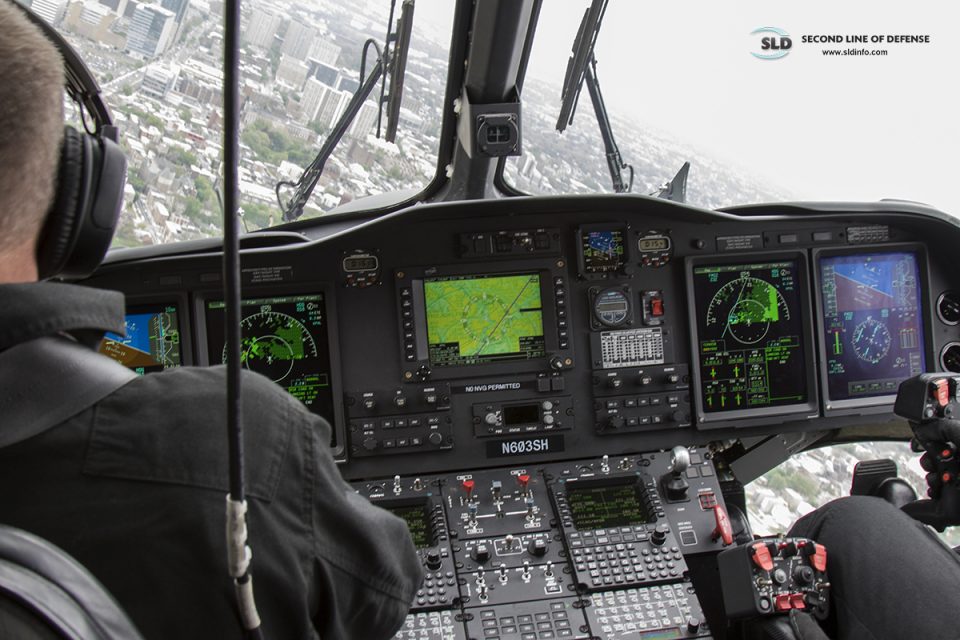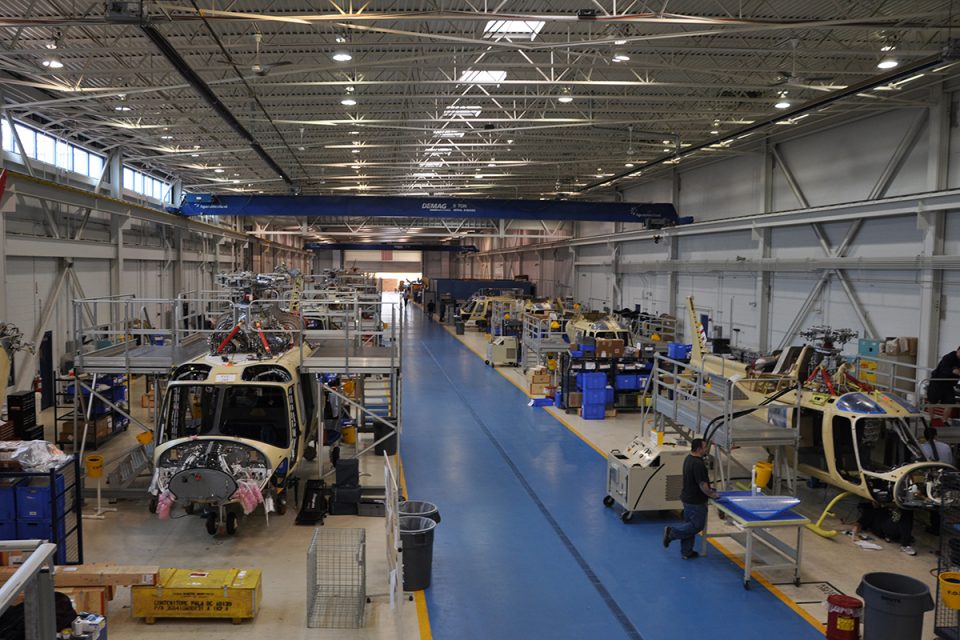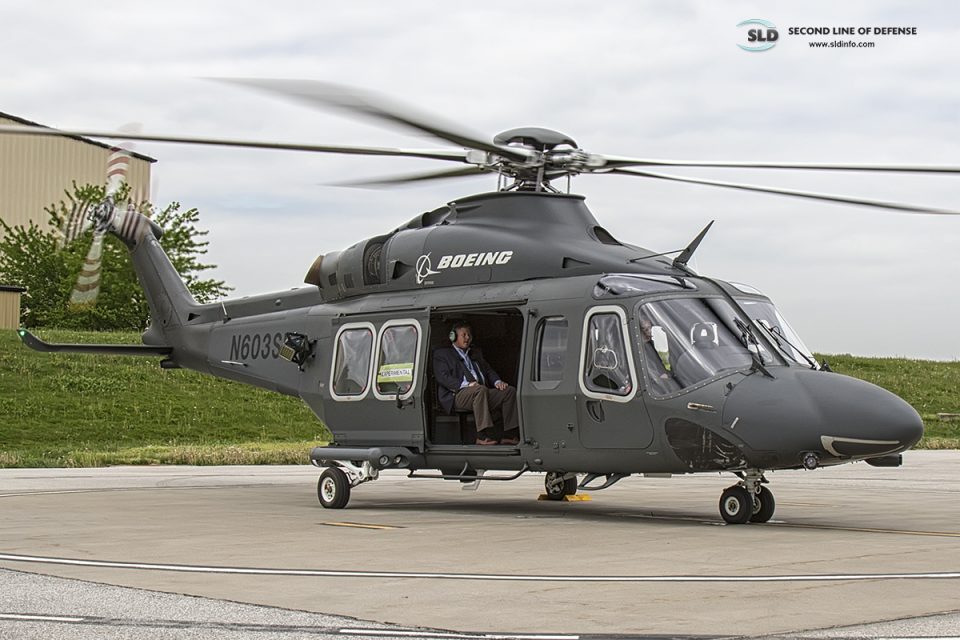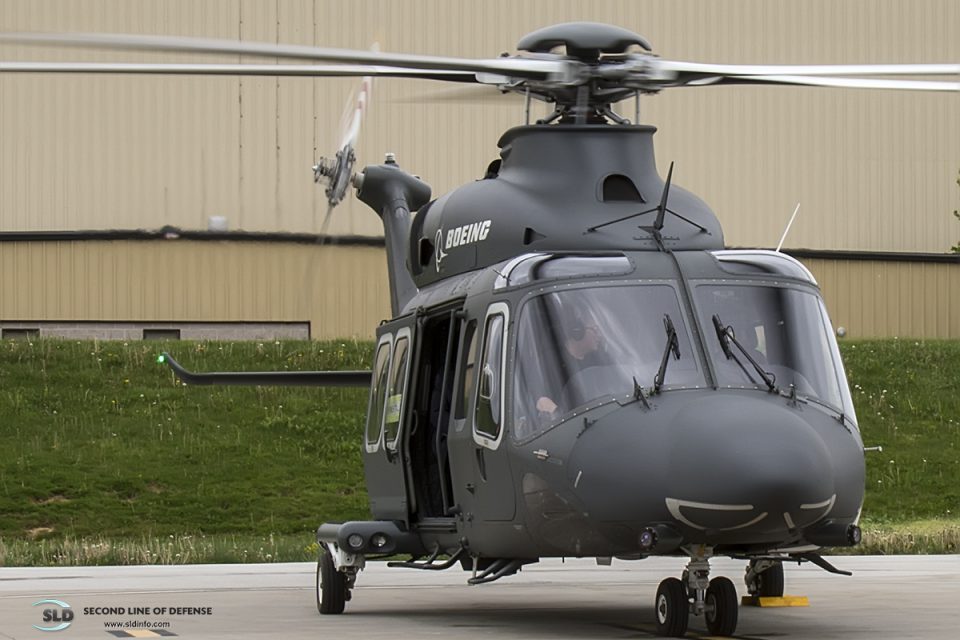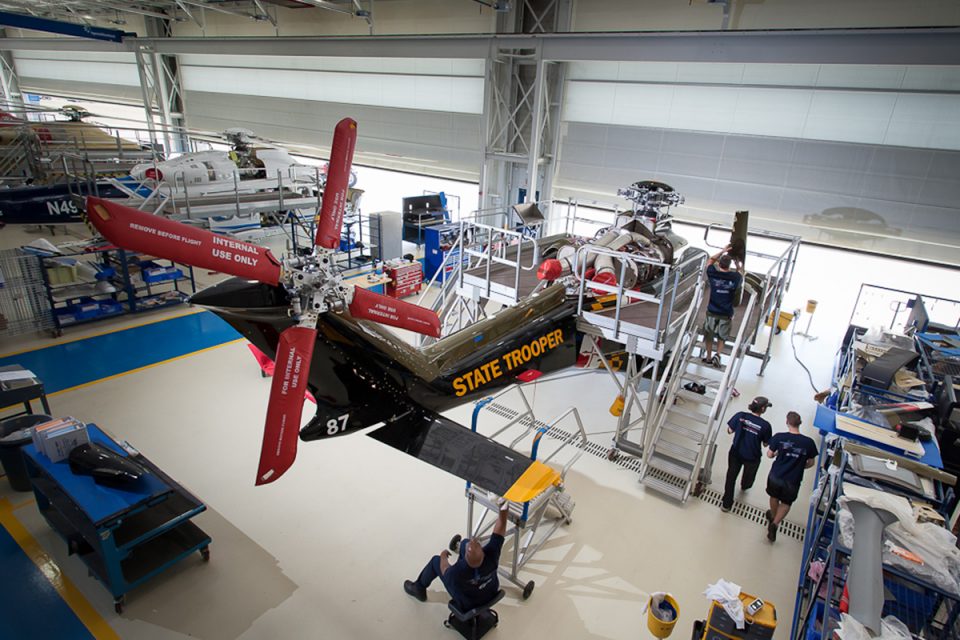2017-05-26 By Todd Miller
The Air Force plans to replace their aging UH-1N Huey fleet with up to 84 new helicopters.
The UH-1Ns are utilized for a continuous contingency response for the security of the nation’s ICBM complexes throughout Wyoming, Montana & North Dakota as well as the continuity of government mission in the Washington D.C. area.
The UH-1Ns age is showing, and they are unable to meet the key requirements for speed, range, payload and operations in a compromised environment.
Driven by urgency the replacement was initially sought as a sole source contract extended to Sikorsky for their state of the art HH-60U “Ghost Hawk.”
The contract is now open to manufacturers to bid platforms that meet the requirements outlined to date in the RFP.
However, the requirements and bid philosophy appear to be evolving, with a second draft RFP and industry discussions taking place to dial in the details.
MH-139- for USAF Competition from SldInfo.com on Vimeo.
It is anticipated requirements will be finalized this summer.
The Air Force plans to move quickly to award a contract in FY18, and take deliveries of the new helicopter in 2020.
While the list of contenders for this contract has not yet been finalized, two players have stepped forward.
Sikorsky has proposed their HH-60U, the latest version of their HH-60 line of military helicopters utilized by all 5 service branches.
Boeing has teamed (as prime contractor) with AugustaWestland to propose a militarized version of very commercially successful AugustaWestland AW139, namely the MH-139.
Given the military services widespread use of the Sikorsky military aircraft, there would appear to be obvious advantages to utilize the Sikorsky, such as fleet commonality and already established depot structures. These aspects would seem to sway the decision most naturally to the HH-60U.
Yet in the contract competition the Air Force does not allow an advantage to Sikorsky of offering a widely supported military aircraft already in service.
This means that the competition allows a commercial derivative that meets the performance requirements to have a place in the competition for the 84 helicopters which the contract envisages.
Boeing is offering such a derivative and projects savings from such.
According to David Koopersmith, Vice President and General Manager at Boeing’s Vertical Lift Division the selection of the MH-139 will provide a savings to the Air Force of $1 billion over its 30 year lifecycle.
The challenge for the USAF is to ensure that indeed any Sikorsky alternative meets the Air Force performance requirements and the bid meets the American content and any other specified requirements.
During a visit to Philadelphia I had a chance to take a closer look at the MH-139 platform and substantive aspects of the Boeing/AugustaWestland collaboration.
Origins
The AW139 originated from a Bell Helicopters and AugustaWestland joint development to replace none other than the Huey itelf.
The first helicopters manufactured were AB139s (Augusta-Bell).
Bell subsequently sold their share in the venture to AugustaWestland, and the helicopter become the AW139.
Subsequently AugustaWestland has been rebranded “Leonardo Helicopters” a division of the parent company Leonardo.
Rather than a design that has evolved and been upgraded over 40 years, the AW139 is a completely modern helicopter designed from scratch starting in the late 90s.
According to J.D. Clem, Director of AugustaWestland’s USAF Division, the AW139/MH-139 “does everything the Huey does – better.
“It flies 50 percent faster, it has a larger cabin, carries 5000 lbs more payload and it has much greater range.”
Featuring a modernized glass cockpit the MH-139 utilizes advanced autopilot, avionics, navigation systems and configurable MFDs.
Commercial Success
With over 900 aircraft delivered in 10 years, the AW139 is a resounding commercial success.
It is a type-certified FAA FAR Part 29 helicopter.
Clem notes that the model has now accumulated over 1.7 million flight hours.
Users include Military, Police, Fire, Search & Rescue, Security, Oil & Gas, VIP Transport and more.
The helicopter is widely used in the United States by such groups as the Maryland and New Jersey State Police, Los Angeles Fire Department as well as customers who provide VIP transport and services to the Oil and Gas industry.
The helicopter is quiet, smooth and fast.
With a smaller footprint (landing gear and overall dimensions), and relatively tall, spacious cabin it makes an excellent transport.
Given the current customer base the helicopter is frequently seen in the skies over and around Washington, DC.
Maintainability
Clem notes that the AW139 has been the leader in its segment since introduction.
Notching 1000 sales to 250 customers (many with small fleets) speaks to helicopters low operating costs and high maintainability.
Per Clem, the AW139 was “designed from the start to have condition based maintenance and designed from the start to have long MTBF on components.”
He continued, “In the commercial world, customers don’t make money if it is not flying.”
And it is flying. Clem noted several airframes that have very high hours, such as “a particular AW139 servicing the oil rigs that is 10 years old and has 12,000 hours. 1100 hours per year for 10 years straight.
“You can’t do that unless you’re very reliable.”
More specifically Clem noted that from a maintenance perspective, “The basic airframe does not go back to a depot.
The main gearbox is rated to 6000 hours, the tail rotor box to 7500 hours, the engine to 5000 hours.
The big components stay on the machine, and the machine keeps flying.”
Citing an example of the Maryland State Police Clem noted that every day they pull a 24 hour alert in 7 locations, with one machine in each location.
The relative small crew of pilots (2) paramedic and rescue technician push the helicopter out of the hangar and have it airborne in 7 minutes.
The helicopter is extremely reliable, and is doing it in all manner of climates all around the world.
Production Capability
If the Air Force selects the Boeing MH-139, all 84 aircraft will be built at the 275,000 ft2 AugustaWestland facility at Northeast Philadelphia Airport.
AugustaWestland has already built some 250 AW139s at the Philadelphia facility and per William Hunt, CEO of Leonardo Helicopters, Philadelphia, everything is already in place to handle the production of the 84 machines.
As it stands today, customers utilize reconfigurable interiors, and a wide variety of equipment for the helicopters specific use.
All integration is done right on the production line, according to well established process.
Per Hunt, the helicopter could be rolling off production lines quickly once the contract is awarded, and would support 500 jobs in the United States.
Boeing Experience
The MH-139 “model” of the AW139 will ultimately be Boeings contract to fulfill.
“Boeing has tremendous expertise overseeing military-unique procurements, logistics support and support for equipment, test hubs and flight line maintenance,” said Rick Lemaster, Director, Global Sales and Marketing, Vertical Lift Programs, The Boeing Company
Boeing has supported Air Force platforms for 80 years, and is currently doing so with the V-22 Osprey, CH-47 Chinook, AH-64 Apache, and AH-6 Light Attack Helicopter.
Performance, Reliability, Track Record, Cost, Production, Management expertise, Check.
Given the USAF approach to the competition, the MH-139 is clearly a compelling contender for the Air Force contract.
In any case, given the widespread utilization of the current contenders, a large body of data is available to evaluate the merits of each airframe.
Granted, the outcome may hinge on the final RFP released by the Air Force, but from the outside looking in – the Boeing MH-139 could be well positioned to win the competition.
Editor Note 1: Our colleague Colin Clark of Breaking Defense looked at the Sikorsky offering in the competition earlier this year:
Sikorsky Unveils HH-60U For Air Force Nuke Response
By COLIN CLARKon February 28, 2017 at 5:32 PM
WASHINGTON: The day before the Air Force Association’s annual winter conference begins, the newest wrinkle in the years-long saga of deciding what aircraft the Air Force would buy to secure America’s nuclear missile fields was announced.
Lockheed Martin’s Sikorsky will offer — surprise! — an updated version of the Black Hawk helicopter, the HH-60U.
Last May, the Air Force dropped its plan to just pay $1.4 billion in a sole-source deal to buy the upgraded Black Hawks to replace the aging UH-N1s now in its fleet. Air Force Global Strike Command has said the Hueys are too slow and lack the necessary range to handle the critical nuclear security mission.
The helicopters are used at all three missile bases, Malmstrom, Minot and Warren AFBs.
A key requirement for the competitors to meet is the ability to carry a full load of nine combat-ready airmen. Lockheed says their HH-60U can carry indeed transport nine fully outfitted Security Forces specialists, special equipment and two special mission aviators for the Continuity of Operations mission, which is all about getting senior leaders out of harm’s way in a disaster or attack. Lockheed says that mission requires transport for eight. The company also says the HH-60U can carry 9,600 pounds “of useful load.”
The continuity mission is in addition to keeping the missile fields secure and responding to any threats to them or to their nuclear payloads.
Lockheed noted in its release that the HH-60U “shares 85 percent commonality with the service’s incoming fleet of HH-60W Combat Rescue Helicopters, and it will share the existing infrastructure that supports the Air Force’s retiring fleet of HH-60G Pave Hawks.”
There are already three HH-60U Black Hawk aircraft in the Air Force’s inventory.
Finnemeccanica’s subsidiary Leonardo (formerly AgustaWestland) pressed hard last year for the Air Force to open the competition to a traditional competitive acquisition. It wanted to offer its American-assembled AW139.
Editor’s Note 2: This competition for 84 helicopters as well as the competition set up for 17 JSTARS replacement aircraft both raise fundamental questions about the Obama legacy inherited by the Trump Administration with regard to USAF procurement.
Competition to get lowest price regardless of the logic of the mission dictated choice needs a serious relook, and the new Secretary of the USAF needs to look hard in this direction.
Boeing recently protested a USAF contract and the USAF response actually underscores the need for some serious strategic change in USAF procurement.
The contract in question is for the Compass Call aircraft completion where the USAF claims it does not have the relevant expertise to pick the aircraft for the mission!
According to an article published by Defense One on May 24, 2017 about the Boeing protest:
Boeing is formally challenging a U.S. Air Force decision that allows L3 Technologies to choose a new plane to replace the EC-130 Compass Call intelligence aircraft.
The firm’s protest is a public rebuke of the Air Force, a measure rarely taken by America’s largest aerospace manufacturer.
“The Air Force’s approach is inconsistent with Congress’s direction in the 2017 NDAA and seems to ignore inherent and obvious conflicts of interest,” Caroline Hutchinson, a Boeing spokeswoman, said in an email Wednesday.
“We believe that the U.S. Air Force and taxpayer would be best served by a fair and open competition, and that the Air Force can still meet its stated timeline of replacing the aging fleet of EC-130Hs within 10 years.”
Boeing filed the protest with the Government Accountability Office on May 19. The nonpartisan office is expected to make a ruling by Aug. 28.
Company sources said the conflict of interest stems from L3’s unique relationship with airplane manufacturer Gulfstream, maker of the G550 business jet. L3 modifies G550s for foreign air forces.
U.S. Air Force officials had wanted to buy the G550 in an earlier attempt to replace the Compass Call, and Boeing alleges that in choosing L3, the Air Force is implicitly picking the G550 again.
Boeing would much rather the Air Force to hold a competition in which the Chicago-based company could pitch one of its jetliner-based aircraft to hold the sophisticated Compass Call electronics…..
The Compass Call program is the first of an expected string of programs to replace various fleets of decades-old Air Force intelligence planes based on the 707 jetliner. Winning the EC-130 replacement job would allow Boeing to argue the merits of commonality in future contests…..
Earlier this year, the Air Force gave L3 the responsibility for selecting a new plane for the Compass Call mission, saying that the service’s own acquisition officials lacked the expertise to make the decision.
L3 is the company that installs the sophisticated intelligence equipment on the current Compass Call aircraft, 42-year-old C-130s. The Air Force says it urgently needs to replace the EC-130H with and aircraft that can fly further and higher and offer better reliability.
Boeing argues that it, too, has the expertise to be put in charge of the project.
OK let us repeat that USAF comment: “the service’s own acquisition officials lacked the expertise to make the decision.”
It is time to drain the swamp and reset the entire acquisition approach.


